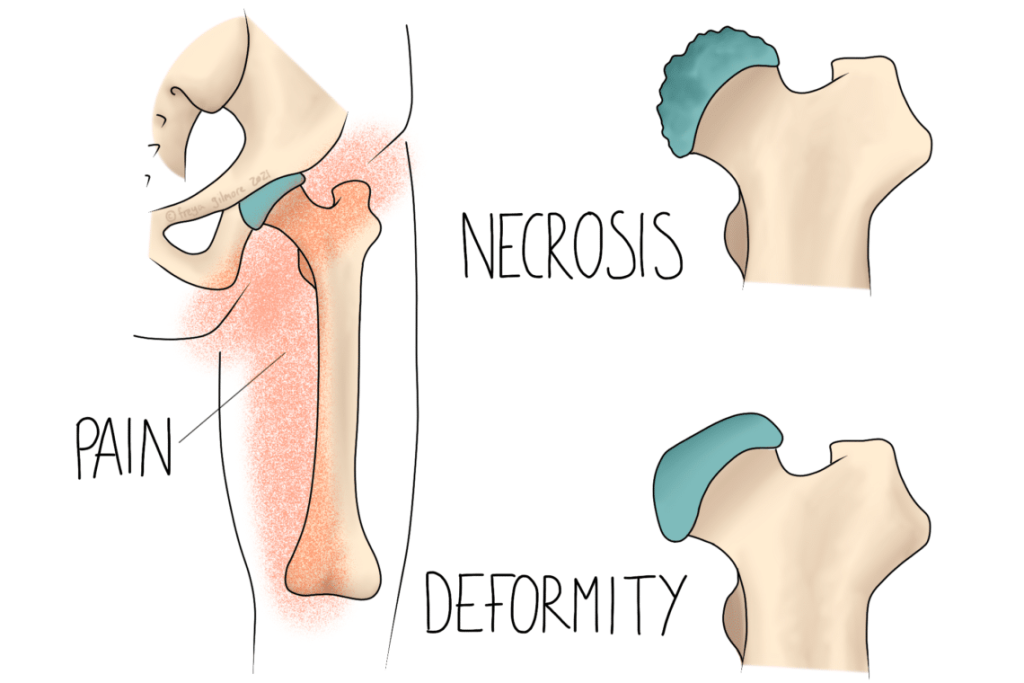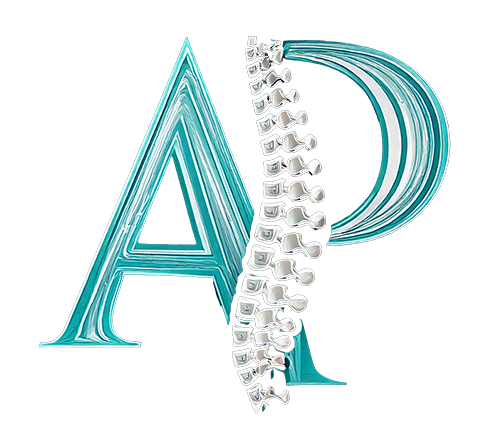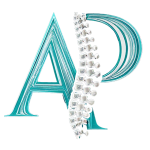Perthes’ Disease
Perthes’ Disease is a rare childhood disease affecting the shape of the hip joint. It eventually burns itself out, but can be a cause of arthritis later in life. It also goes by the name “Legg-Calve-Perthes Disease”.

What Is Perthes’ Disease?
This is a condition in which the blood supply to part of the thigh bone is disrupted. Specifically, it is the head of the femur (the ball of the ball and socket) that is affected. Bone is living tissue, and in children affected by Perthes’, it is still growing. Reduction of the blood supply causes part of the bone to die (necrosis), and become misshapen. Long term effects depend on the details of the repair stage described below.
Frustratingly, we don’t know exactly what causes the disease to develop. Some cases are associated with rapid growth spurts that somehow disrupts the blood supply. Other cases are associated with trauma or infection, or even congenital hip dislocation. In about 1/10 cases the other hip develops the same condition after the first.
Symptoms of Perthes’ Disease
Perthes’ begins between the ages of 4 and 10, and many more boys are affected than girls. Early signs often include a limp, which is likely to be worse after exercise. This may be completely painless or persistently painful. Where there is pain, it may spread to the groin or as far as the knee (illustrated above).
The Repair Stage
Once blood flow returns, the body begins to heal the damaged tissue. Some cases heal perfectly, and even an X-ray would not clearly show that there was ever a problem. Other cases can lead to a deformed femoral head, which may have a flat portion or a rough texture compared to a healthy one. This is likely to impact range of movement and may cause a limp. Sometimes a brace will be recommended by the orthopaedics team, in order to hold the femoral head in the roundest part of the socket. This aims to encourage the bone to grow into the correct shape.
Your Osteopath’s Role
We cannot resolve the blood supply, but we may be able to help with the compensatory patterns that develop in response to the pain. A child with suspected Perthes’ Disease requires referral to their GP and on to the orthopaedics team. We can support with symptom management and ensuring the hip maintains as much normal movement as possible.
Longer term complications of the condition can include a limp or early onset arthritis. We may be able to help manage the arthritis, especially if addressed at the earliest symptoms. A limp caused by asymmetry of the thigh bones is not an inherent problem- a well managed limp can be pain free. This depends on the body’s ability to adapt to the demands of the limp. As long as the legs and back can compensate for these changes indefinitely, it should be comfortable. This might require intermittent treatment over years, or it may be perfectly manageable with prescribed exercises.

